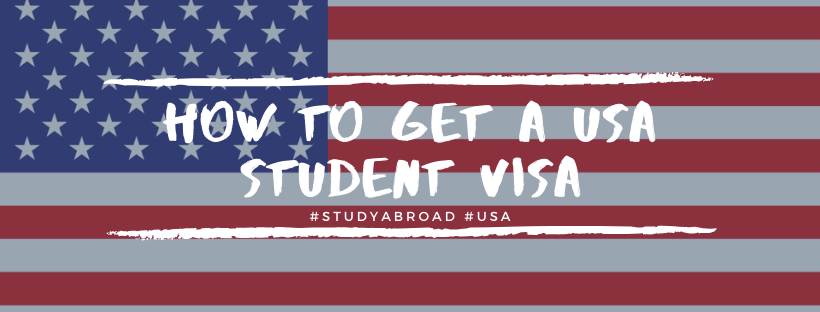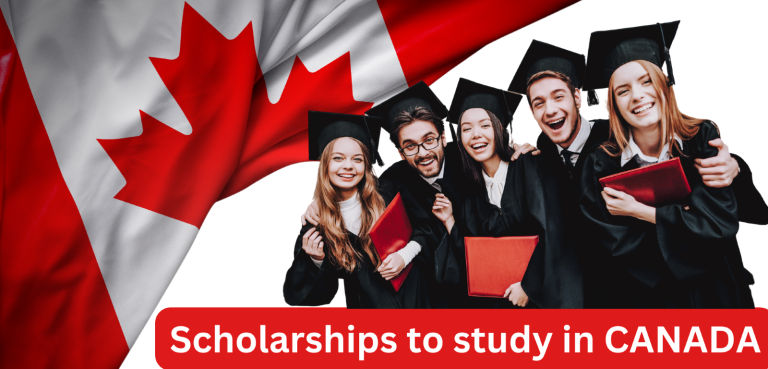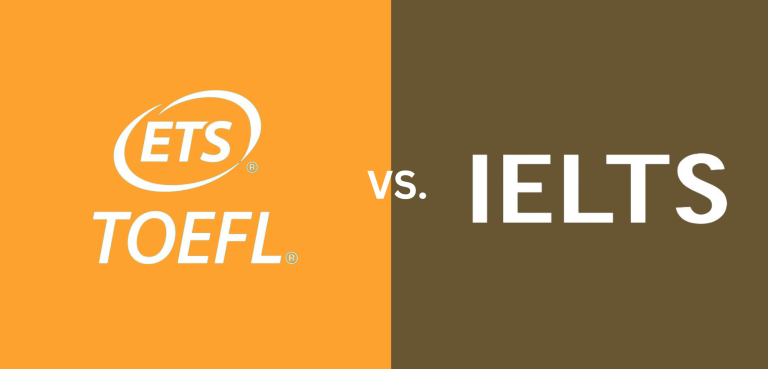A studnets visa is the first pre-requisite for anyone willing to study in the US, or any other country for that matter. Applying for a US student visa can be a long procedure, so ensure you begin planning well ahead of time – i.e, atleast three to five months before your course is about to start. There are normally a few stages of application. These steps vary at each US embassy or consulate, so it’s critical to consult the guidelines on the website of the embassy or consulate where you intend to apply.
All in all, prospective students will have to experience five phases while applying for a US student visa:
1. Apply to and be acknowledged by a Student and Exchange Visitor Program (SEVP) – approved school in the US (six months to a year preceding US study);
2. Pay the Student and Exchange Visitor Information System (SEVIS) fee;
3. Complete a US student visa application alongside recent photo(s);
4. Pay the visa application fee;
5. Schedule and attend the visa interview
These steps have been explained in further detail as under:
1. Apply to a SEVP-approved institution
As a international student, one should ensure that they choose an institution and a program authorized by the US government’s Student and Exchange Visitor Program (SEVP).
Accreditation is significant as it guarantees your degree is perceived by different colleges, proficient affiliations, businesses and government services around the world. Only SEVP- approved institutions can select students in the Student and Exchange Visitor Information System (SEVIS) and give you the documents important to apply for a US student visa. Utilize the administration’s Study in the States site to check licensed organizations.
In contrast to certain nations, the US doesn’t have a concentrated college application framework, so you should apply to every institution you are keen on, independently. You’ll have to satisfy every establishment’s affirmations necessities, and as a rule will likewise be solicited to give verification from adequate budgetary assets.
When you have been acknowledged by an establishment, the college will select you in the SEVIS framework and you will be sent a SEVIS-created archive called Form I-20 on the off chance that you are qualified for a F or M visa, or Form DS-2019 on the off chance that you are qualified for a J visa.
The SEVP oversees universal students in the F and M visa orders, while the Department of State (DoS) oversees Exchange Visitor Programs and global students on J visa characterizations. Both SEVP and DoS use SEVIS to track and screen institutions and trade guest projects and worldwide students.
2. Pay the SEVIS fee
You should pay the SEVIS fee at any rate three days before presenting an application for a US visa. So as to pay the fee you’ll have to pay either an online or on paper. Both can be found through the US Immigration and Customs Enforcement (ICE) SEVP site. Take care to enter the necessary details precisely as they show up on your I-20 or DS-2019 form.
The site clarifies the method for various sorts of installment including fee or Visa, cheque, worldwide cash request and Western Union Quick Pay. Having paid the fee, you can come back to the site to check your payment status whenever wanted. A third party (such as your sponsor) can likewise pay the fee for you. On the off chance that the fee is paid for your sponsor, you ought to get a receipt from that outsider.
You can get and print an installment affirmation from the site whenever after processing your payment. You’ll require this affirmation as verification of fee installment at your US student visa interview. You may likewise be required to demonstrate the affirmation to the cutoms official at your chosen US Port of Entry, if at any time you change your non-foreigner status, or in case you’re applying for some other US migration benefits.
3. Complete a US student visa application
When you have gotten your SEVIS form and paid the SEVIS fee, you can take an appointment with the US consulate or embassy in your nation for a US student visa application. It’s ideal to apply as ahead of schedule as could reasonably be expected, paying little heed to when your program is due to start, as visa preparing times can change. Your visa can be given as long as 120 days before you’re expected to enter the US.
Most nations have their own committed site for everything to do with making a student visa application.
Online visa application: DS-160
In all cases you’ll have to finish the online visa application form DS-160. You’ll have to choose the area from which you wish to apply and guarantee you possess all the archives and data required to fill in the application. In the wake of choosing and responding to a security question, you’ll be taken to the pages of the form. At the top, you’ll find your application ID. You’ll require this ID to recover your form on the off chance that you have to leave the application and come back to it later.
Personal details required to finish the DS-160 form include:
- Name and date of birth
- Address and telephone number
- Passport details
- Details of travel plans, and travel companions
- Details of previous US travel
- Your point of contact in the US
- Family, work and education details
- Security, background and medical health information
- SEVIS ID and address of US school/program you intend to enroll in (as printed on I-20 or DS-2019 form)
You will also be required to upload a recent passport size photograph of yourself in the configuration explained in the ‘photograph requirments’ section. On the off chance that your photograph transfer fails, you’ll have to take a printed photo – which meets the necessities – to your visa interview.
Carefully respond all questions precisely and completely as you may need to reschedule your visa interview appointment in the event that you make any blunders. On the off chance that you get befuddled when filling in the application form, you may find answers to your inquiries on the travel.state.gov site.
When the visa application form is finished, you’ll have to electronically sign your DS-160 by tapping the “Sign Application” button toward the end. After your application is transferred, you’ll be sent an affirmation page with a standardized passport, scanner tag number and your application ID number which you’ll have to print out and take to your visa interview appointment. You don’t have to print the full application.
4. Pay the visa application fee
The visa application fee is additionally called the Machine Readable Visa Fee, or ‘MRV fee’. Make a point to check the fee installment directions accessible on your embassy or consulate website as methods may vary. As a rule, be that as it may, there are three different ways to pay the non-refundable, non-transferrable visa application fee:
- Face to face at an affirmed bank
- By telephone (you’ll get a fee affirmation number)
- On the web (you’ll have to print your receipt)
During your research, don’t stress in the event that you go over the term ‘visa issuance fee based on reciprocity’ – this doesn’t have any significant bearing for F1, F2, M1, M2, J1 and J2 visa candidates.
You’ll be requested the MRV fee receipt when you get to your visa interview.
5. Schedule and attend a US student visa interview
The last step in getting a US student visa is to arrange and go to a visa interview. You can do this either on the web or through a telephone, by calling your nearest US embassy or consulate. The visa application process can’t be finished until you show up for a meeting with a consulate official. Do not stress if you have to plan your visa appointment at an alternate US consulate or embassy than the one you used to apply for your visa. The barcode from your DS-160 can be used to retrieve your information in any US embassy or consulate. In any case, know that it might be hard to meet all requirements for a visa on the off-chance that you apply outside your place of permanent residence. Waiting times for visa interview appointments fluctuate by area, season and visa category.
Documents for the visa interview
Check the site of the embassy or consulate where you will apply to ensure you have all the necessary documents required for your meeting. These documents may include:
- Passport valid for at least six months beyond your period of stay in the US. If more than one person is included in your passport, each person who needs a visa must submit a separate application. You may also need to bring all your current and old passports.
- Signed SEVIS Form I-20 or DS-2019 (including individual forms for spouse/children)
- Form DS-7002 (for J-1 Trainee and Intern visa applicants only)
- SEVIS fee receipt
- DS-160 application confirmation page with barcode and application ID number
- MRV fee payment confirmation receipt
- Printed copy of visa interview appointment letter
- 1-2 photographs in the format explained in the photograph requirements. Should be printed on photo quality paper.
You ought to likewise be set up to give the accompanying records:
- Transcripts and certificates from past institutions attended
- Scores from standardized tests required by the institutions , for example, the TOEFL, LSAT, GRE, GMAT, etc.
- Monetary proof demonstrating you or your sponsor (for example guardians or a government sponsor) has adequate funds to cover your educational cost, travel and everyday costs during your stay in the US.
You can likewise bring along a different composed rundown of all your past bosses and schools you have gone to for reference.
Any derivative visa candidates should take:
- A duplicate of the marriage or potentially birth certificate for confirmation of relationship
- A duplicate of the chief candidate’s visa (for example F-1, M-1, J-1), or official documentation from the USCIS affirming the chief candidate’s status.
- A duplicate of the individual’s personal data page information page from the principal candidate’s passports.
Going to the visa interview
It’s essential to be on schedule for your visa interview – late candidates might be approached to reschedule for one more day. Most of the time only the candidates with a scheduled appointment will be admitted inside the US embassy or consulate. Special cases incorporate a parent for youngsters under 18, interpreters, and colleagues for the impaired – you’ll have to contact your chosen US embassy or consulate to give them the name of the parent, interpreter or associate who will accompany you.
The purpose of the visa interview is for the consular official to decide if you are able to get a US student visa and, provided that this is true, which visa category is proper for you. Be set up to address questions with respect to connections to your nation of origin, your English language abilities, your schools/colleges, the program in the US to which you have been admitted, and evidence of your money related assets. You may also be asked to explain your plans for when your studies are finished.
Ink-free, digital fingerprint scans will be taken as a feature of your application procedure. This usually happens at your visa interview.
After your interview, the consular official will let you know whether your application requires further administrative processing – this can mean extra time for you to stand by to get your visa. You will likewise be informed how and when your passport with the visa will be returned to you (usually pick-up or delivery by courier).
F-1 and M-1 visas can be given as long as 120 days ahead of time of your investigation start date, however you won’t be permitted to enter the US sooner than 30 days before your beginning date. On the off chance that you need to enter the US before these 30 days, you should meet all requirements for and acquire a guest visa. This limitation doesn’t apply to students coming back to resume studies – they may enter the US whenever, if they have a substantial visa.
Utilizing your visa
As there is no assurance you will be given a visa, don’t make travel appointments or purchase tickets until you have a visa. Know that a substantial visa doesn’t ensure entry into the US: it just permits you to head out to a US port-of-entry and request permission to enter the US. Authorization to enter is given by a Department of Homeland Security (DHS) Customs and Border Protection (CBP) official.
Continuously convey your visa-related documents in your hand baggage, as you should be able to present your documents when required at your respective port-of-entry. Archives you should keep with you include:
- Passport
- SEVIS Form I-20 or DS-2019
- Proof of financial assets
- Proof of student status, (for example, recenttuition receipts and transcripts)
- Name and contact data for your Designated School Official (DSO), including a 24-hour crisis contact number at your chosen institution.
- If you’re an exchange student: letter from your home university stating your intent to return to your home university.
You should have your Form I-20/DS-2019 each time you enter the US – in the event that you get away outside of the US you will require the SEVIS form to reappear the nation.




